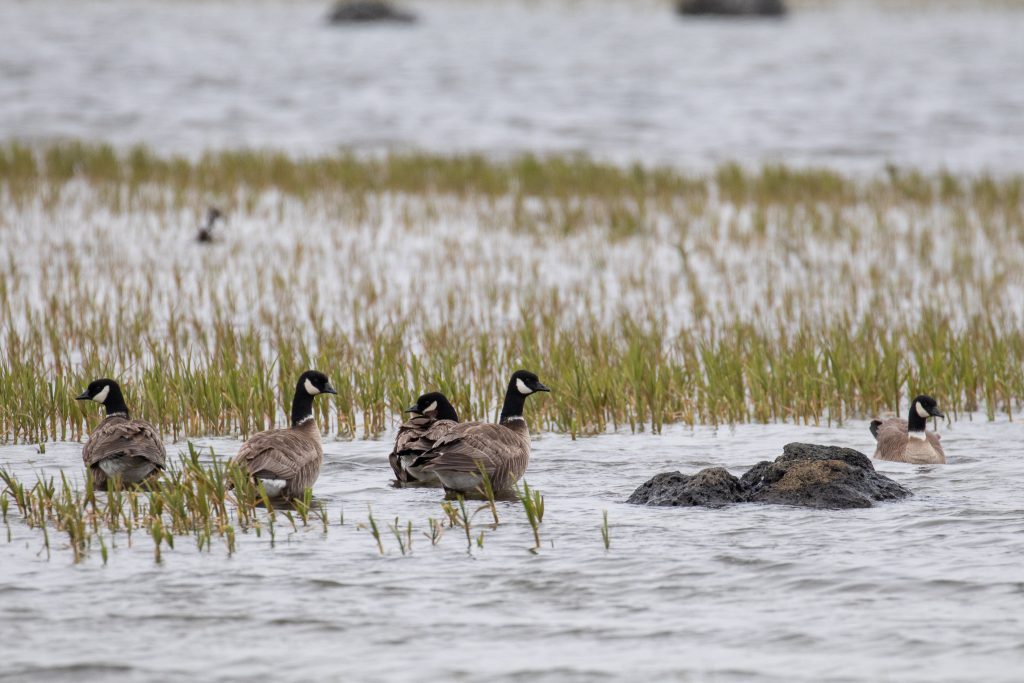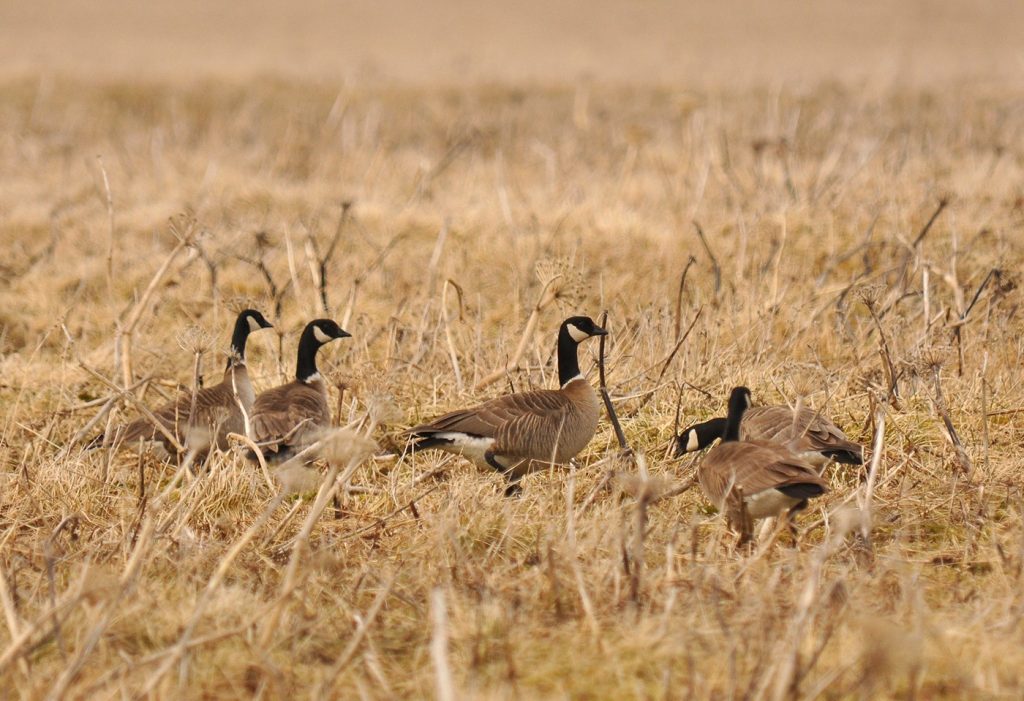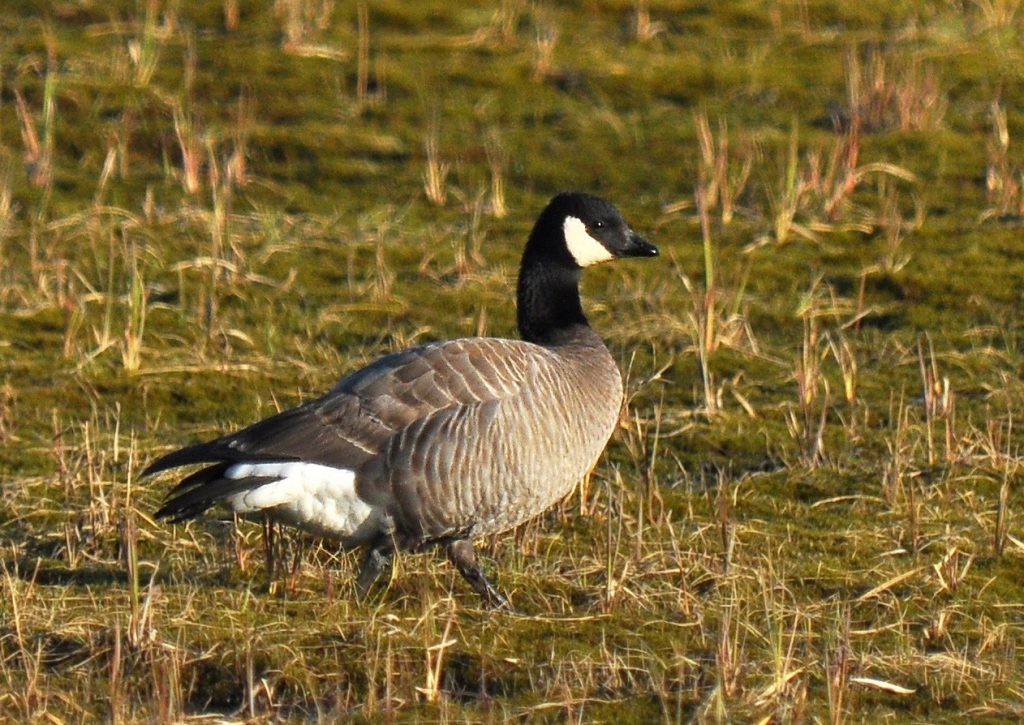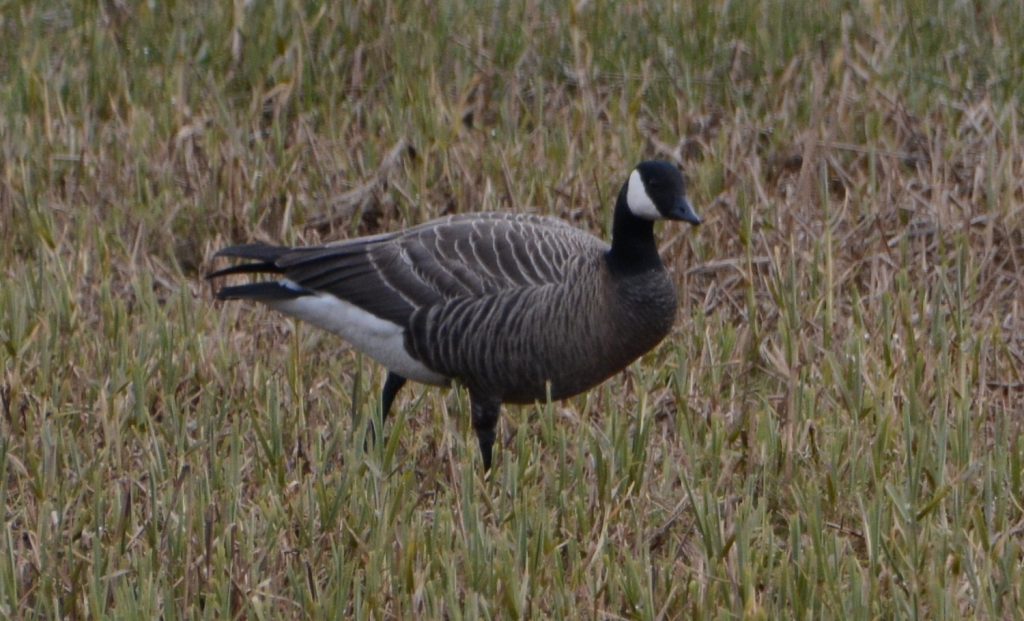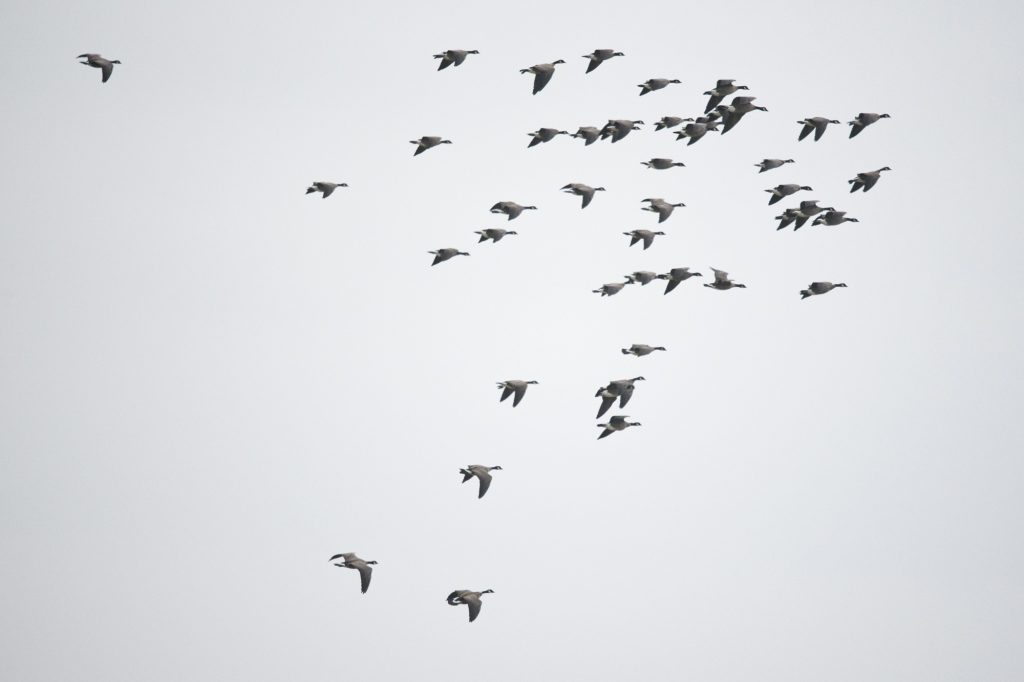This species has skyrocketed in abundance during recent years thanks to the very successful recovery of the Aleutian-breeding subspecies since the 1990s. It is a common migrant in the spring and into the summer in most years, though there remain distinctly fewer fall records, which are on the increase as well. The other Alaskan-breeding subspecies of Cackling Goose (minima and taverneri) have been noted as migrants as well, albeit they are much less common. This species is regular after May 15th and is found more regularly into the summer than perhaps any other migrant species of waterfowl in the Pribilofs leaving little delineation between spring migrants, lingering birds into the summer, and summer wanderers. The peak spring occurrence is on or about May 30th with early summer sightings during most years and a peak occurrence around June 25th. Fall migrants have been noted in only a few years (all recent except for a record from 1910), however increased coverage at that time could produce this species more regularly. Given the current situation it is quite possible that this species could someday begin nesting in the Pribilofs, especially around interior crater lakes where foxes are not regularly found.
Most records are of the Aleutian-breeding subspecies leucopareia, with minimal records of other Cackling Goose taxa. The next most common is the minima Cackling Goose which breeds in southwestern Alaska and is found annually in the spring, though typically only one or two individuals, and they are often in the company of “Aleutian” Cackling Geese. The rarest taxon is taverneri, which has been reported on two occasions.
